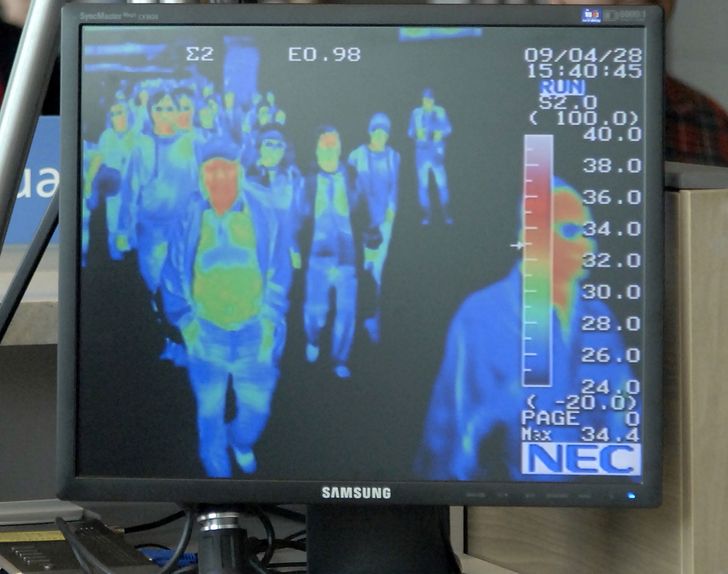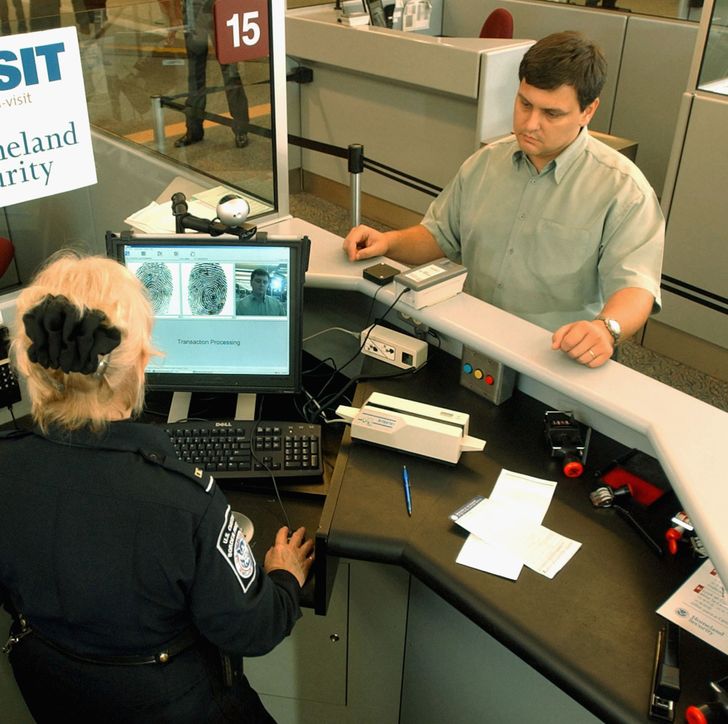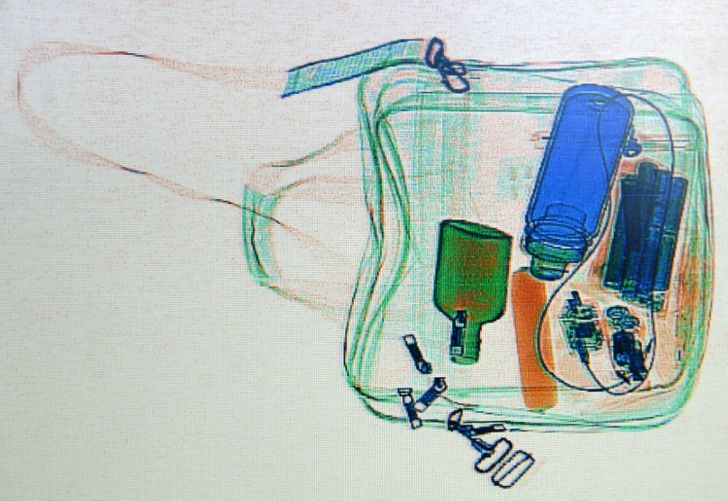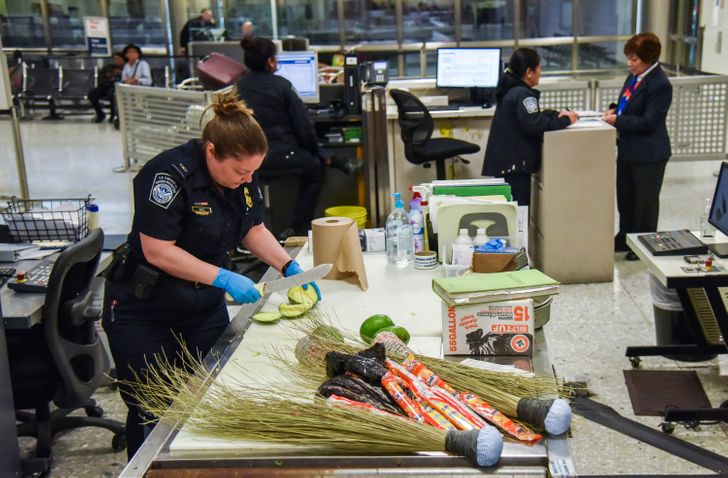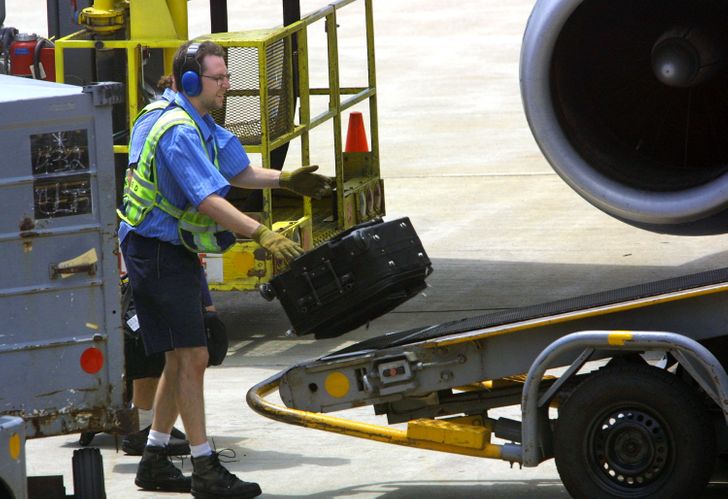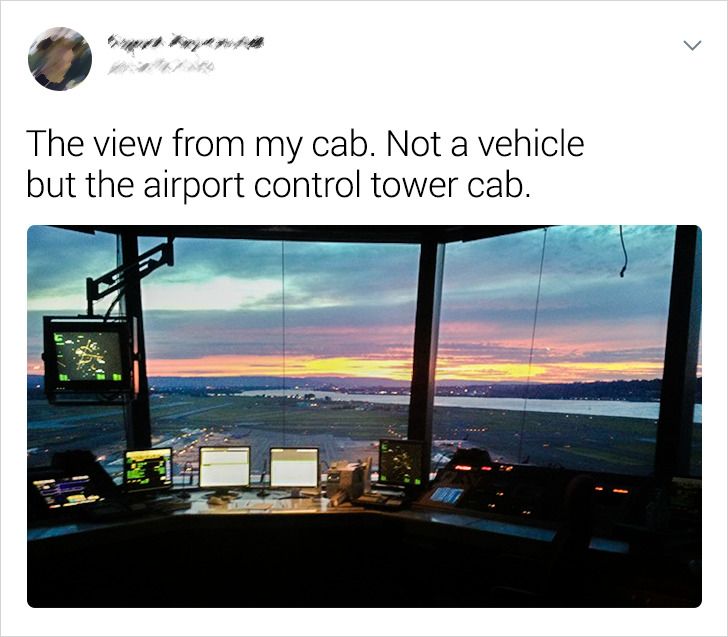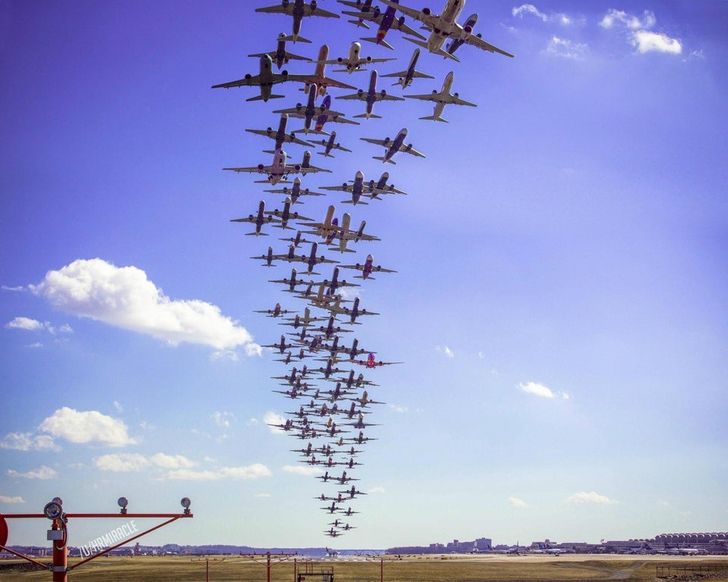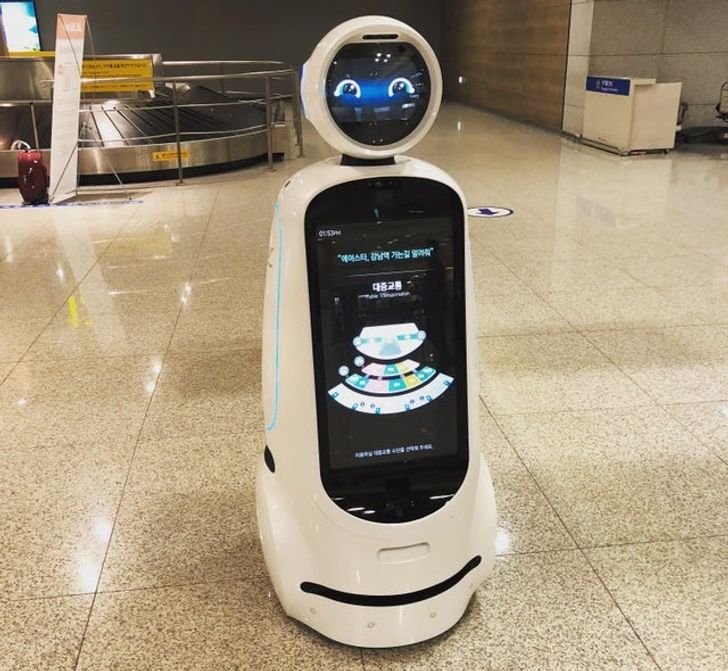I hope the part where they scan people's temperatures take into consideration that not everyone that has a fever is contagious or has a virus. I've got an autoimmune disease that can cause my temperature to spike to 105 degrees in 20 minutes if I have a flare. Flares can be triggered by stress and of course airports can be stressful. It's my own immune system attacking my body causing the temperature though. Not something anyone can catch. I'd hate to be left behind on a flight because of it
20+ Secrets Airport Workers Don’t Tell Ordinary Passengers About
We, as passengers, only want our flight to be on time and our baggage to be delivered safely, and airport employees have a lot of work because check-in and security checks are only the tip of the iceberg. From the moment you enter the airport building and until the moment you land, you are constantly watched. All your pre-flight procedures are a compromise between safety and speed.
We at Bright Side love to dream and we want to believe that in a couple of decades all the formalities in airports will go away and thanks to the development of technology, it will be possible to get on board right from the street.
Safety
A thermal scanner helps to identify people with high body temperature in a group of other people.
- Thermal scanners are used to track people’s body temperatures in order not to allow people that are ill onboard. This control is especially thorough during flu outbreaks. The device can measure someone’s temperature from a distance of 10 meters within an accuracy of 0.1°.
- In some airports, there are profilers — specialists that pay attention to the body language, mimics, and behavior patterns of passengers and try to identify potentially dangerous people.
- The scanners used in airports are absolutely safe. The X-ray machines used in hospitals have a power of about 600 microsieverts and modern airport scanners are no more than 0.5 microsieverts.
- There is special computer software used to process the footage of CCTV cameras. It estimates the psychological state of people and can transform people’s smallest motions into color indicators: a lot of green — safe, a lot of red — a reason to stop them for a check.
- Plastic trays in the security area are the dirtiest things in the entire airport. Scientists found 10 respiratory viruses, such as flu type A, and more than 100 pathogen microorganisms on these.
- The most suspicious pieces of clothing and the most popular reason for an additional security check may be loose cargo pants with a lot of pockets and long dresses and skirts.
- The security service will not love it if you mention a weapon, even if it is a joke, if you have a lot of cash, or if you are too worried about your upcoming flight.
- If a passenger has funny-looking hair, they are very likely to be invited for an additional check because big hairstyles could be concealing a weapon.
It is better to be very calm and informative when answering any questions like, “Where are you flying?”, “What are your carrying?”, and “What is the purpose of your visit?”
- If an employee is looking at your passport and your ticket and asking you, “Where are you flying?”, they are not joking. This is part of the profiling process which tries to identify a suspicious person. If you react too fast or answer in an unconfident way, this may be a reason for further questions. If you haven’t done anything illegal and you are just worried because of all the questions and suspicions, just tell the employee about it. After this, they are more likely to think you are safe.
- In order not to attract additional attention from the security service, it is better to not use any hairpins. If you have too many of them, the metal detector might react to them or to other big metal bracelets and necklaces.
- Suspicious people are sent for an additional security check with a scanner that can see literally through their internal organs. In the past, scanners used to show the whole body but today’s machines only show the foreign objects and hide the body parts.
- If you try to bring on something forbidden, you will not be able to get the object back. The security service will decide what to do with these things. Some of them are thrown away, some are sold at auctions.
- In order to avoid mistakes, security officers often change positions every 30 minutes. They don’t do the same jobs for a long time because if they did, the monotonous actions might lead to them making a mistake and missing something important. This change of focus helps the agents be more concentrated.
- Right before you enter the security checkpoint, an airport security agent will mark your ticket with their badge number, or some other indication of who screened you to let other checkpoint officers know that you should receive additional screening.
Orange is for clothes and water, green is for metal, and blue is for electronic devices.
- Baggage and carry-on luggage are checked with a special x-ray machine that can’t see through objects wrapped in tin foil. It blocks x-rays, which is why it appears to look like a black spot on the screen. You will be asked to open the bag and show the wrapped object.
- The animals that work in airports are really strong because working conditions are tough: there are a lot of people, a lot of noise, and many different smells. These dogs don’t just look for drugs, but also large amounts of cash, and other substances that might be smuggled.
- A dog that sees something suspicious doesn’t bark loudly and scare everyone around. It uses subtle body language, for example, wagging its tail to tell the officers about the threat. This way, when a dog smells something, officers still have some time to give a signal without raising any suspicions.
- After a dog finishes working on a flight, it is rewarded. But there is a special method. Officers hide special training baggage that contains an imitation of the prohibited substance. When the dog finds it, it gets its favorite toy. This is necessary to support their interest in the job. Security services claim that it is very important that the dog is active. This is why there are special people with an imitation of the dangerous smell in the airport to keep the dog interested.
Baggage
While you are in the waiting room, your baggage travels at huge speeds on some sort of a “rollercoaster” — a huge moving line where bags are sorted automatically. In big airports, the length of this ride may be about 2 miles.
- The security officers may be alerted if you have packs of coffee: this is the classic way of trying to hide the smell of illegal substances. If you are going to fly with objects that have a strange shape, such as staplers or long candlesticks, they will definitely look suspicious during scanning.
- Every time you check a bag, it gets a sticker with a unique barcode. If you decided to leave this sticker as a memory of your previous flight, there is a chance your bag will get lost on your next flight. The system can distribute the baggage to about 50 different planes, so it might scan the wrong barcode and send your bag to the wrong plane. By the way, now, bags are lost way less often. According to SITA, the international IT-provider of the industry, the number of lost bags has decreased from 46.9 million in 2007 to 24.8 million in 2018. And the number of passengers has almost doubled.
If your bag seemed suspicious and was opened, it should have a special sticker that says the bag was opened for an additional security check.
- Before getting on the plane, your bags will be scanned with an Introscope. And the most dangerous-looking bags may be checked with 4 other devices, including a computer tomograph and a diffraction machine.
- Very often, despite the number of different modern devices, people check their carry-on luggage. This is because it may be really hard to tell many substances from each other during a scan. For example, music cards look like bombs in scanners and a big round piece of cheese may look like a liquid explosive.
- Movers in airports pick up and throw up to 125 bags a year. According to them, the most probable cause of lost luggage is arriving to the airport late. It will take about 15 minutes to check you, but it might take more time to check your bags, so they won’t end up getting on the same plane as you.
- What movers hate the most are bags that are packed full of stuff. Very often, they get opened and the movers have to close them for you. The worst is probably liquids in small side pockets. They leak and stain the neighboring bags.
- The bags that have convenient handles are more likely to remain in one piece. Ideally, these handles should be on the top and at the bottom. They are the first bags that get on the plane. Another way to save your luggage is by not making it too heavy. It is better to take 2 big light bags than one heavy bag.
Control room
- There are several work places in control rooms: the people that control the on-ground planes, and the people that control take-off and landing. They are responsible for different things. But in order to keep things safe, they have to communicate with each other. There is a chief manager that controls the amount of work every member gets.
- Despite the fact that they have devices, all dispatchers need to know meteorology. If a computer doesn’t work, they need to be able to determine the direction and the speed of the wind using a windsock. And in order to determine the visibility level, dispatchers look at specific things: like neighboring buildings or towers.
- If a radio is broken in a control room, dispatchers show a green light to the pilot telling them it is safe to land. And if there is some trouble, the light will be blinking red.
- There are dozens of dispatchers for every flight. It seems that there is a lot of space in the sky but this is not true: it is split into areas with its own highways and intersections. The entire sky is split into different sectors.
Time-lapse at Reagan National Airport
-
Every 2 hours, control room dispatchers are supposed to rest. Usually, for 20 minutes. There is a special room for rest with couches and TVs. They can go and drink some coffee, lie down, talk on the phone, walk, or read. There is also a gym in the building, but it is not recommended to use it during work.
-
Dispatchers have to train their voices. In their everyday lives, they might speak quietly, but at work, their voices change as if they are news anchors. This is necessary to make sure that the information they deliver on the radio is absolutely clear.
Airport of the future
Helpful robots at Incheon Airport, in Seoul scan your boarding pass and accompany you to the gate if you are late or lost.
- Not very ago, a special platform was invented that can detect explosives hidden in people’s shoes waiting for a security check. The shoe scanner uses very sensitive electrodes to analyze the shoes and the contents.
- Scientists are working on creating artificial intelligence with a more sensitive version of millimeter-wave scanners that are already used in airports. This will allow passengers to go through scanners without emptying their pockets and security officers can still be able to detect hidden threats.
- Passengers won’t have to remove all their electronic devices and liquids from their bags. AI will be able to analyze a regular laptop and check it to see if it was changed to contain the materials the system has never seen in any other laptop before.
- There is an eco-friendly food tray. It was made of coffee beans, pressed banana leaves, and the spoon is made of out coconut, which is cheap and easy to find.
- There is a new system called MagRay based on the technology used in medicine. This is a combination of X-rays, and the nuclear magnetic resonance used in MRIs. The 2 methods were combined in order to be able to tell dangerous liquids from safe ones quickly.
- Robots will be able to take passengers’ luggage right at the entrance. These robots, developed by SITA, are being tested by an airport in Geneva. The device allows passengers to scan their boarding passes, put their bags on the robot, and put the tags the robot prints out on the bags. The Singapore airport also has a robot terminal now. Passengers have access to automatic check-in tables and passport control with self-recognition systems.
What do you think the airport of the future should look like?
Comments
I think before they take the decision to whether leave you behind or not, they ask. You shouldn't worry about that! I'm sure that if you explain you situation they'll understand. I went through a similar situation and nothing out of the ordinary happened ??♀️
I don't know why but everything I go to an airport I feel nervous! Call me crazy haha
I used to feel like this before but then I understood that it was thing silly to go through tho. Just chill, you're not doing anything bad ?
Haha I just laughed with the big hair styles! Such a crazy thing!
I always thought it's funny how everything in the airport is super secure.. until you arrive and you can just pick up any bag you want
haha wait I never thought of this! Then again, I never heard of people stealing bags in this way..
Yeah It's a big flaw.. I wonder why they don't use a checkoff area or something that is connected to your ticket. Could also provide more jobs for people which is always nice
And more money for the airport to spend.. that's probably why they don't care
Related Reads
10+ People Revealed the Moment They Knew Their Partner Was “The One”

I Don’t Want to Host My Husband’s Family on the Weekend, Now He’s Mad at Me

12 True Stories With Twists So Wild, They Could Break the Internet

I Refuse to Pay for My Daughter’s Wedding After She Chose Her Stepdad to Walk Her Down the Aisle

12 Revelations From Kids That Sent Shockwaves Through Their Families

15 Stories About First Love That Had an Unexpected Twist Years Later

Men And Women — We Are So Different

My Husband Wants a Divorce, Yet Insists We Keep Living Together With His Mistress

10+ People Whose Love Can’t Be Destroyed by Routine and Everyday Struggles

10 Creepy Stories That Will Make You Want to Look Back and Turn the Lights On

12 Disturbing Events That Crushed People’s Spirits

12 Shocking Turns of Events That Left People Dumbfounded

